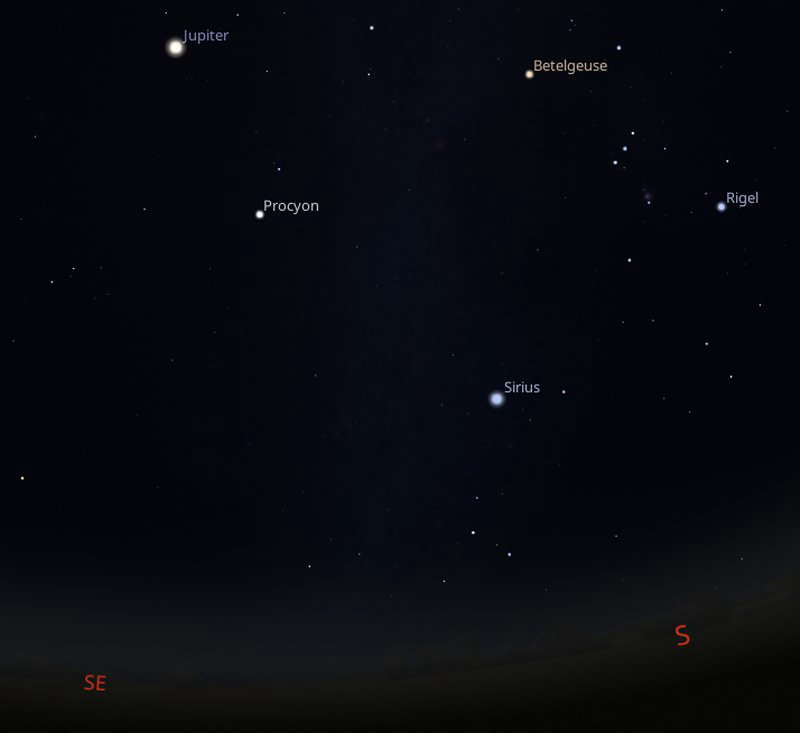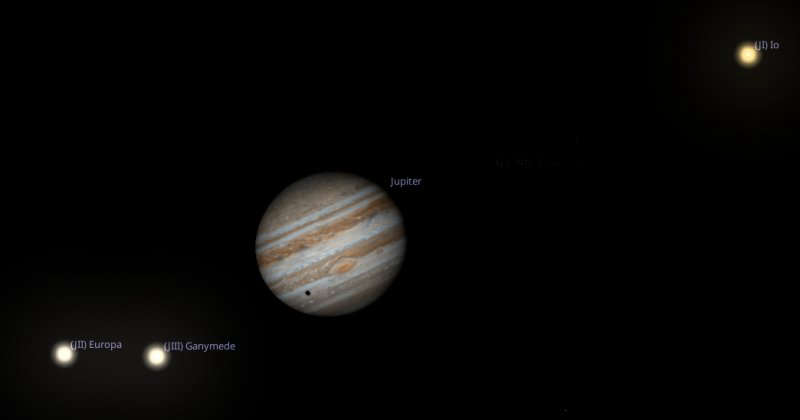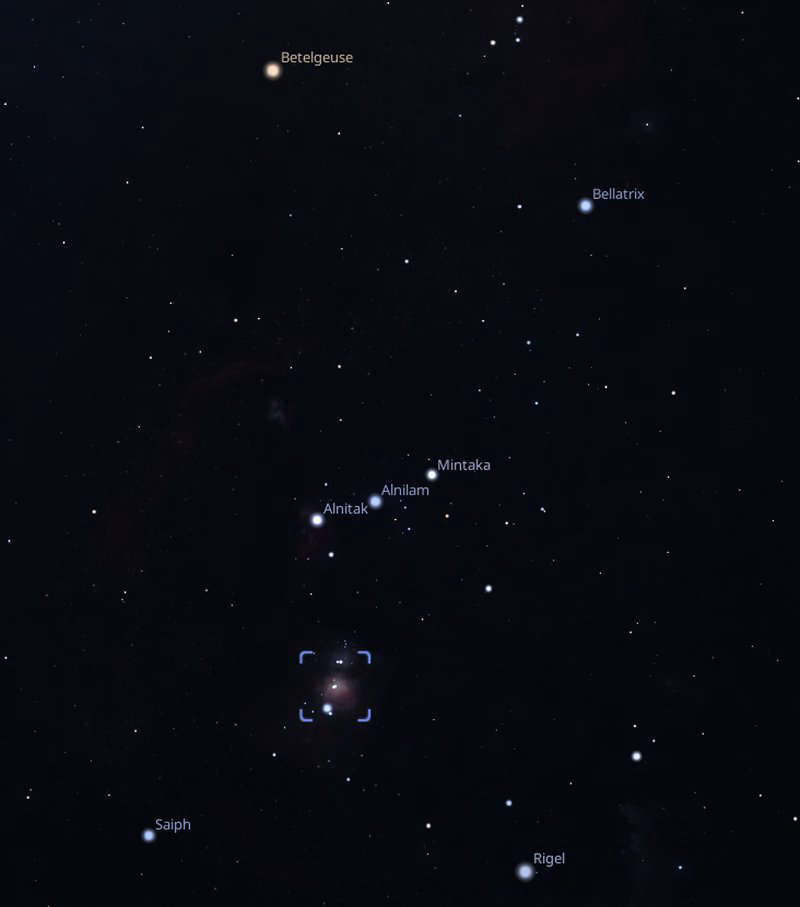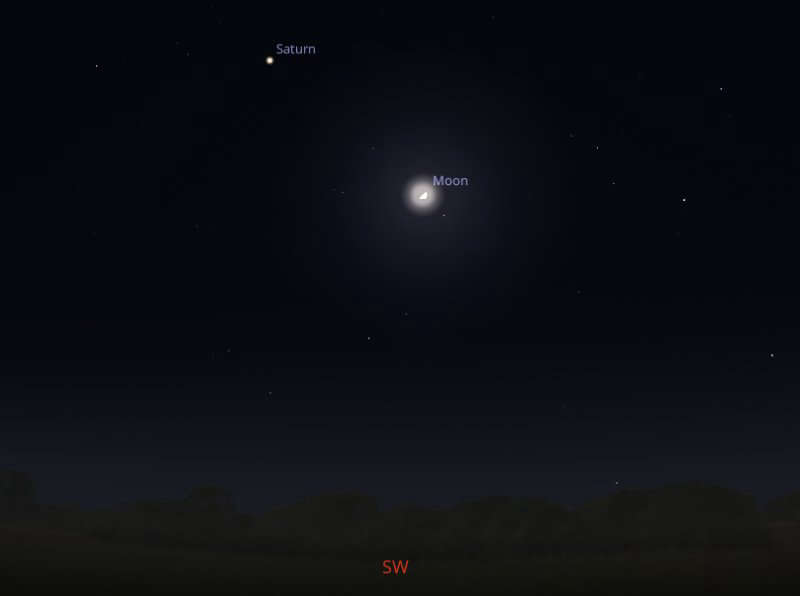
Monday 24th to Sunday 30th November 2025
Last week I mentioned the shadows of two of Jupiter's moons, Io and Callisto, being cast on to the planet's surface. This coming week, it is the turn of another moon, Ganymede, to do the same. The Galilean moon's shadow can be observed between about


If at the same time, you look to the right of Jupiter and a little below it, you will be able to see the bright star, Procyon and the brightest star in the night sky, Sirius. To the right of them, the constellation of Orion will be easy to find.
Why not have a go at spotting the Great Orion Nebula M42, located in the "sword" of Orion while you are there. M42 is classed as an "emission" nebula where light is radiated from its gasses and it is where stars are born. The nebula is about 1600 light years away from us, so if you observe it next week with your telescope, you will actually be seeing the nebula how it looked 1600 years ago!

If that sounds amazing and you would like to learn more, the first of my astronomy talks and star parties for this season will be taking place at the Ham Hill Visitor Centre on the evening of Friday 28th November. There will be a one-hour talk about the night sky at
The following evening, Saturday 29th, it should be possible to observe a 65%-lit waxing gibbous Moon close to Saturn if you look towards the south west around

www.starsoversomerset.com
Screenshots courtesy of Stellarium
Copyright Adrian Dening and Radio Ninesprings 2025

 Urgent Appeal
Urgent Appeal
 Winter Coat Scheme
Winter Coat Scheme
 Recycling
Recycling
 Ilminster Local Plan
Ilminster Local Plan
 Hate Crime
Hate Crime
 Dog DNA
Dog DNA









